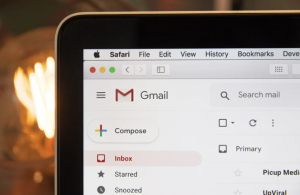
Uncategorized
Avoid Sending Spam!

If you are and Australian Business, operating from Australia and with an Australian website, do you know your obligations under the 2003 Spam Act?
Building your business website using a site builder such as Wix, goDaddy and others may produce something cheaper (and looking like everyone else’s site) but using a professional web developer adds so much more and if you use your website as a source of customer data, you need our services to avoid falling foul of the law.
Influence IT, and our group trading businesses braxit and Quikstart, helps you to make sure that your website and contact approaches comply with legislation relating to the Spam Act 2003. Contact any of our group businesses to discuss how we can help you avoid being on the wrong side of the Spam Act.
Here’s a quick guide to your responsibilities under Australian Law, courtesy of the Australian Communications and Media Authority.
- How to Comply
- Get Permission
- Identify yourself as the Sender
- Make it easy to Unsubscribe
- Other Actions which may break the Spam Rules
- Ask for or Provide Information
How to comply
If you plan to send marketing messages or emails, you must first have permission from the person who will receive them.
Even if someone else is sending out your marketing messages for you, you must still have permission from each person who will receive your messages.
After you get permission, you must ensure your message:
Get permission
There are two types of permission:
- express
- inferred
Express permission
A person who gives express permission knows and accepts that they will receive marketing emails or messages from you.
People can give express permission by one of the following:
- filling in a form
- ticking a box on a website
- over the phone
- face to face
You cannot send an electronic message to ask for permission, because this is a marketing message.
Keep a record when a person gives express permission, including who gave the permission and how.
Under the Act, it’s up to you to prove that you have a person’s permission.
Inferred permission
You may infer that you have permission to send marketing messages if the recipient has knowingly and directly given their address and it is reasonable to believe they would expect to receive marketing from your business.
This is usually when a person has a provable, ongoing relationship with your business, and the marketing is directly related to that relationship.
For example, if someone has subscribed to a service, has an account or is a member, and the marketing is relevant to the relationship.
It does not cover sending messages after someone has just bought something from your business.
Use of contact-tracing information
Is your business keeping customer records for COVID contact-tracing?
Remember that any phone numbers and email addresses you get for this reason cannot be used for marketing. You may face serious penalties for misusing this information.
Know your responsibilities for email lists
Take care when you buy or use a marketing list.
You are still responsible for making sure you have permission for any addresses you use.
Identify yourself as the sender
In your message, you must:
- accurately identify your name or business name
- include correct contact details for you or your business
If someone else sends messages on your behalf, the message must still identify you as the business that authorised the message. Use the correct legal name of your business, or your name and Australian Business Number (ABN).
This information must remain correct for at least 30 days after you send the message.
Make it easy to unsubscribe
You need to make it easy for people to unsubscribe from your electronic mailing lists.
Under the Spam Act, every commercial message must contain an ‘unsubscribe’ option that:
- presents unsubscribe instructions clearly
- honours a request to unsubscribe within 5 working days
- does not require the payment of a fee
- does not cost more than the usual amount for using the address (such as a standard text charge)
- is functional for at least 30 days after you sent the message
Unsubscribe examples that are clearly worded
Email:
To stop receiving messages from us, simply reply to this email with ‘unsubscribe’ in the subject line.
If you no longer wish to receive these messages, please click the ‘unsubscribe’ button below.
SMS:
Reply STOP
Unsub: (1800-number)
Other actions that may break the spam rules
Under the Spam Act, you cannot:
- use or supply a list that has been created with address-harvesting software
- use or supply address-harvesting software
It is also against the spam rules to:
- help, guide or work with another person to break the spam rules
- encourage another person to break the spam rules
- be directly or indirectly, knowingly concerned with breaking the spam rules
Ask for or provide information to/from ACMA
If you or someone else breaks the spam rules, you can tell the Australian Communications and Media Authority.
If you do break the spam rules, telling ACMA may help to fix the issue quickly. ACMA reviews all cases individually, and they may be resolved without further action.
ACMA values all information because it helps identify trends and spot serious or ongoing issues. Contact ACMA
Influence IT acknowledges the content provided here from the ACMA website, 2021.
